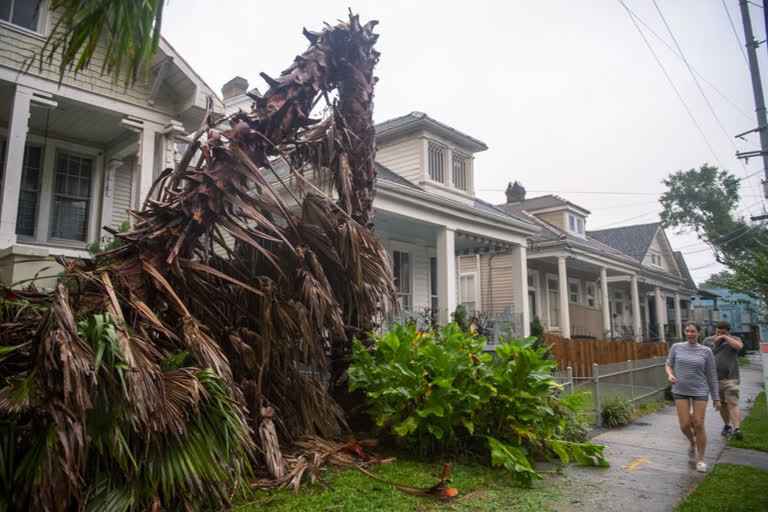New Orleans: Hurricane Zeta slammed into the storm-weary Gulf Coast on Wednesday, pelting the New Orleans metro area with rain and howling winds that ripped apart buildings, knocked out power and threatened to push up to nine feet of seawater inland in a region already pounded by multiple storms this year.
St. Bernard Parish President Guy McInnis said emergency workers were doing their best to respond to reports of people in distress after their roofs were blown off.
“Guys, we received the brunt of Zeta, and Zeta gave us a good punch,” McInnis told WDSU-TV.
Roads were flooded near the coast, where forecasters said Zeta made landfall around Terrebonne Bay near Cocodrie, an unincorporated fishing village at the end of a highway with few if any full-time residents and a marine laboratory where a building was inundated.
Read:|Zeta likely hurricane before hitting Yucatan, heading for US
Streams of rainfall ran off roofs in New Orleans’ famed French Quarter, signs outside bars and restaurants swayed back and forth in the wind and palm trees along Canal Street whipped furiously. A few trees were down, and one that fell across utility lines sparked a bright orange flash. Officials said a person was hospitalized with minor injuries after a structure collapsed, but further details weren’t available.
More than 815,000 customers were without electricity in Louisiana, Mississippi and Alabama, including about 350,000 in metro New Orleans. More outages were feared overnight as the storm moves northeastward across the Deep South.
Zeta had top sustained winds of 110 mph (177 kph) as a Category 2 hurricane at landfall and is the 27th named storm of a historically busy Atlantic hurricane season — with over a month left to go. It set a new record as the 11th named storm to make landfall in the continental U.S. in a single season, well beyond the nine storms that hit in 1916.
Zeta weakened to a Category 1 hurricane with winds of 90 mph (144 kph) as it moved into southern Mississippi few hours after landfall, but forecasters said it remained a life-threatening storm. Hurricane-force winds blew through Mobile, Alabama, and an NOAA gauge reported a 10-foot storm surge in Waveland, Mississippi.
Tropical storm warnings were issued as far away as the north Georgia mountains, highly unusual for the region. Forecasters issued a string of tornado warnings for as far east as the Florida Panhandle.
New Orleans was in the warning areas of six previous storms that veered east or west this season. This time, Zeta stayed on course.
Louisiana Gov. John Bel Edwards said in a radio interview that boats broke loose and struck a bridge in Lafitte. He said blackouts were extensive, including 94% without power in Plaquemines Parish.
“The wind has caused extensive structural damages to businesses, to homes, to electrical infrastructure,” Edwards said.
Officials had urged people to take precautions, and a business-as-usual atmosphere in the morning in New Orleans diminished as the storm neared and grew stronger. Traffic slowed, and restaurants and coffee shops shut down.
“This year, the storms have been coming back-to-back. They’ve been avoiding New Orleans but finally decided to come,” cookie shop worker Curt Brumfield said as he stowed empty boxes in trash cans outside and others boarded up the windows ahead of the storm’s arrival.
Winds picked up and water rose above the docks in Jean Lafitte, a small fishing town south of New Orleans that takes its name from a French pirate. Workers drove truckloads of sand to low-lying areas where thousands of sandbags were already stacked for previous storms.
